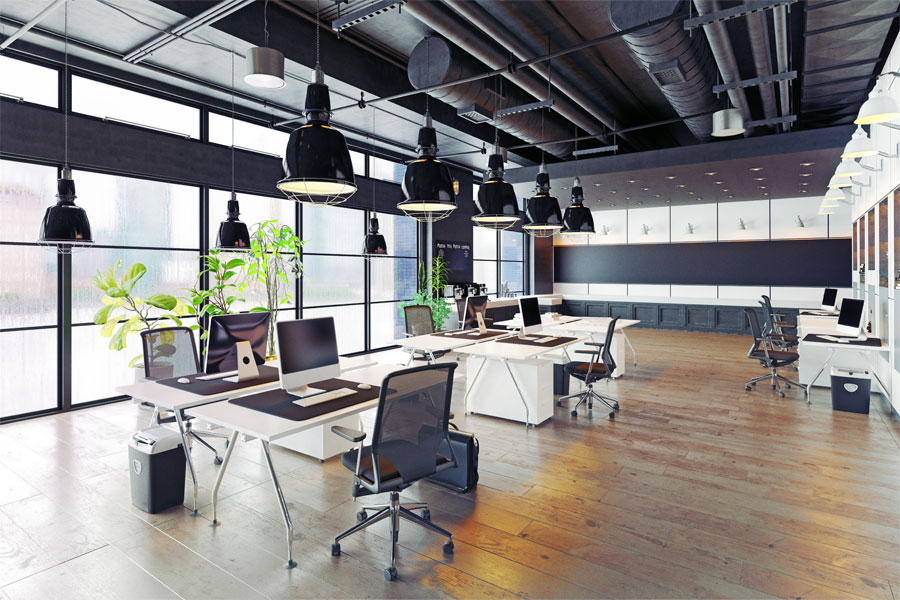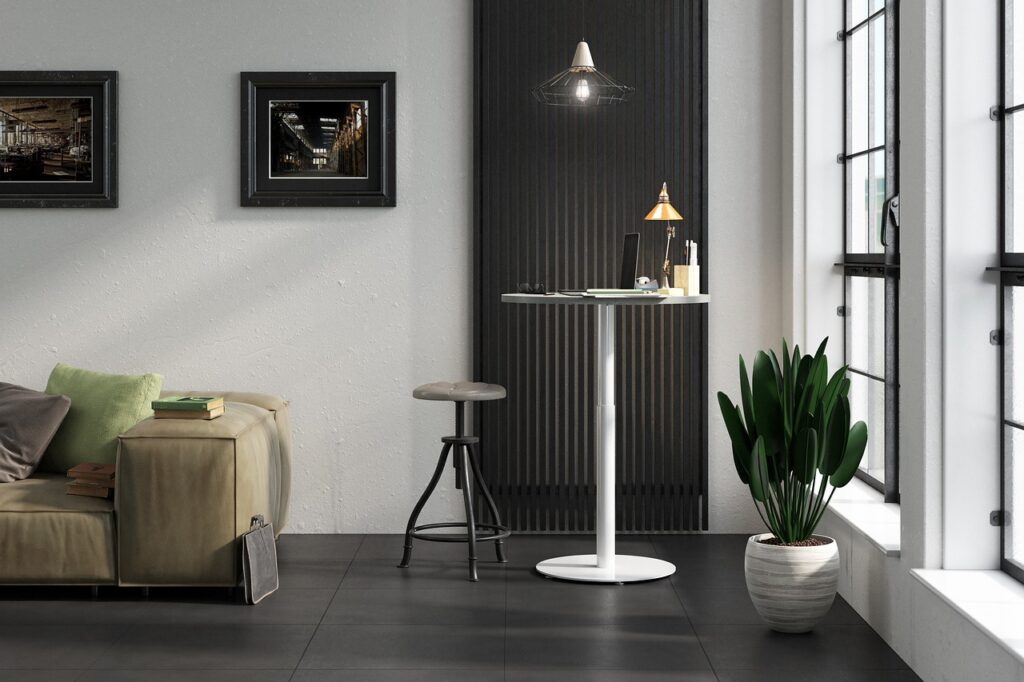In today’s fast-paced world, technology has become an integral part of our daily lives, revolutionizing various industries, including commercial interior design. The incorporation of cutting-edge technology in commercial spaces has transformed the way businesses operate and interact with their customers. This article explores the significant role of technology in modern commercial interiors, focusing on how advancements such as smart lighting, automation, and interactive displays enhance user experience, improve efficiency, and create dynamic environments.
Read: What is commercial interior design?
I. Smart Lighting: Illuminating Possibilities
Smart lighting has emerged as a game-changer in commercial interior design, offering a plethora of benefits for businesses and customers alike. By utilizing intelligent lighting systems, an interior design agency for commercial spaces can create visually stunning environments while improving functionality and energy efficiency. These systems can be programmed to adjust brightness, color temperature, and even mimic natural lighting, enhancing the overall ambience and mood of the space.
In addition to ambiance enhancement, smart lighting also enables energy savings and cost reduction. Sensor-based lighting controls can automatically adjust lighting levels based on occupancy, reducing energy consumption when areas are unoccupied. An interior design agency can strategically integrate these technologies to optimize lighting efficiency and create environmentally responsible spaces, aligning with sustainable design principles.
II. Automation: Streamlining Operations
Automation plays a pivotal role in streamlining operations and enhancing efficiency within commercial spaces. Through the implementation of automated systems, businesses can streamline routine tasks, enabling employees to focus on more valuable activities. For instance, automated systems can control temperature, manage security measures, and regulate equipment, minimizing the need for manual intervention.
An interior design agency for commercial spaces can leverage automation technologies to optimize energy consumption. Automated climate control systems can monitor temperature and adjust settings based on occupancy and weather conditions, ensuring optimal comfort while minimizing energy waste. This integration enhances both energy efficiency and cost savings for businesses.
Furthermore, the seamless integration of building management systems allows for centralized control and monitoring. By connecting various subsystems such as lighting, HVAC, and security, businesses can efficiently manage and maintain their commercial spaces.
III. Interactive Displays: Engaging Experiences
Interactive displays have revolutionized customer engagement within commercial spaces. An interior design agency can strategically incorporate interactive digital signage to captivate and inform customers, creating immersive experiences that leave a lasting impact. These displays can showcase dynamic content, advertisements, or even interactive maps for wayfinding, enhancing the overall customer experience.
Additionally, augmented reality (AR) and virtual reality (VR) technologies have gained popularity in commercial design. Businesses can provide virtual tours, product visualizations, or even gamified experiences to engage and entertain customers. These interactive experiences create a memorable and personalized connection, driving customer satisfaction and brand loyalty.
Furthermore, touch screen technologies have become increasingly prevalent in commercial interiors. From interactive kiosks to touchscreen product catalogs, businesses can offer intuitive interfaces for customers to explore products, services, and information. An interior design agency can strategically position and design these interactive displays to optimize user engagement and facilitate seamless navigation.
IV. Internet of Things (IoT) Connectivity and Data-driven Insights
The Internet of Things (IoT) has unlocked new possibilities in commercial interior design by enabling connectivity and data-driven insights. IoT-enabled devices and sensors allow businesses to collect real-time data on various aspects of the space, including occupancy, temperature, and energy usage. An interior design agency can utilize this data to optimize space utilization, identify patterns, and make informed design decisions.
With IoT integration, businesses can offer personalized experiences to customers. For example, IoT-enabled beacons can detect a customer’s presence and deliver personalized promotions or recommendations via their smartphones. This level of personalization enhances customer satisfaction and increases the chances of conversion.
Additionally, IoT facilitates enhanced facility management and maintenance. By monitoring equipment performance, detecting faults, and automating maintenance schedules, businesses can ensure optimal functionality and minimize downtime. IoT-powered predictive analytics can also help identify potential issues before they escalate, saving time and resources.
V. Future Trends and Innovations
The future of technology in commercial interior design holds exciting possibilities. Artificial intelligence (AI) and machine learning are expected to play a pivotal role in creating intelligent and responsive spaces. AI-powered systems can analyze data, adapt to user preferences, and automate processes to optimize efficiency and enhance the overall user experience.
Voice-activated systems and virtual assistants are becoming increasingly prevalent, offering hands-free control and seamless interactions within commercial spaces. These technologies enable customers to access information, control devices, or even make purchases using voice commands.
Wearable technology is another emerging trend that will impact commercial interiors. Businesses can leverage wearable devices to offer personalized user experiences, such as tailored recommendations or location-based services, enhancing customer engagement and satisfaction.
Sustainability and energy efficiency will remain key considerations in commercial interior design. Technology will continue to play a vital role in creating energy-efficient spaces through the integration of smart lighting, automated systems, and data-driven insights.
Conclusion
The role of technology in modern commercial interiors is transformative. Through the integration of smart lighting, automation, interactive displays, and the Internet of Things, businesses can enhance user experience, improve efficiency, and create dynamic and engaging environments. An interior design agency for commercial spaces has the opportunity to leverage these technological advancements to create visually stunning, functional, and sustainable spaces that meet the evolving needs of businesses and their customers. As we look to the future, the integration of artificial intelligence, voice-activated systems, and wearable technology will undoubtedly shape the commercial interiors of tomorrow, providing even more innovative and sustainable solutions.





